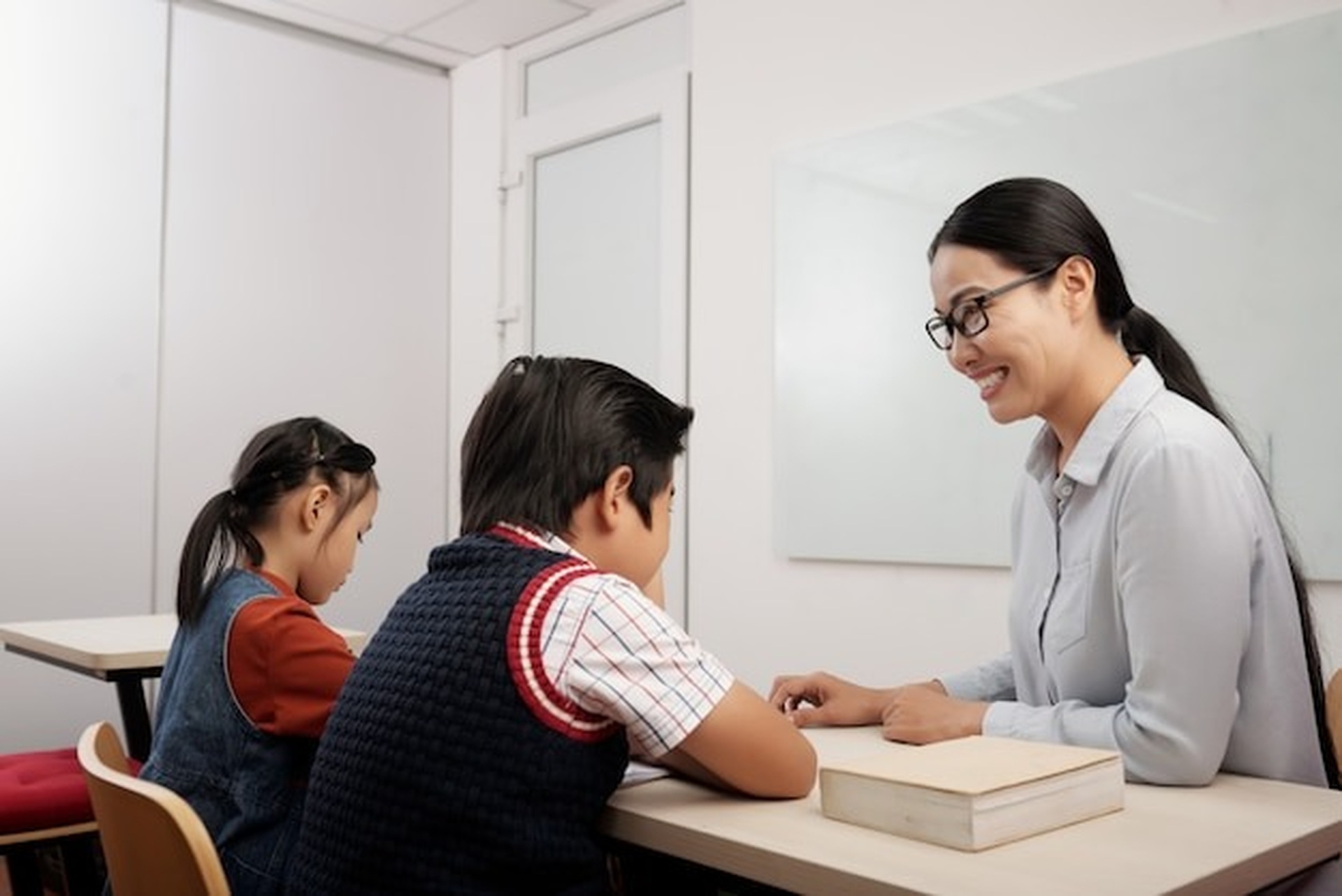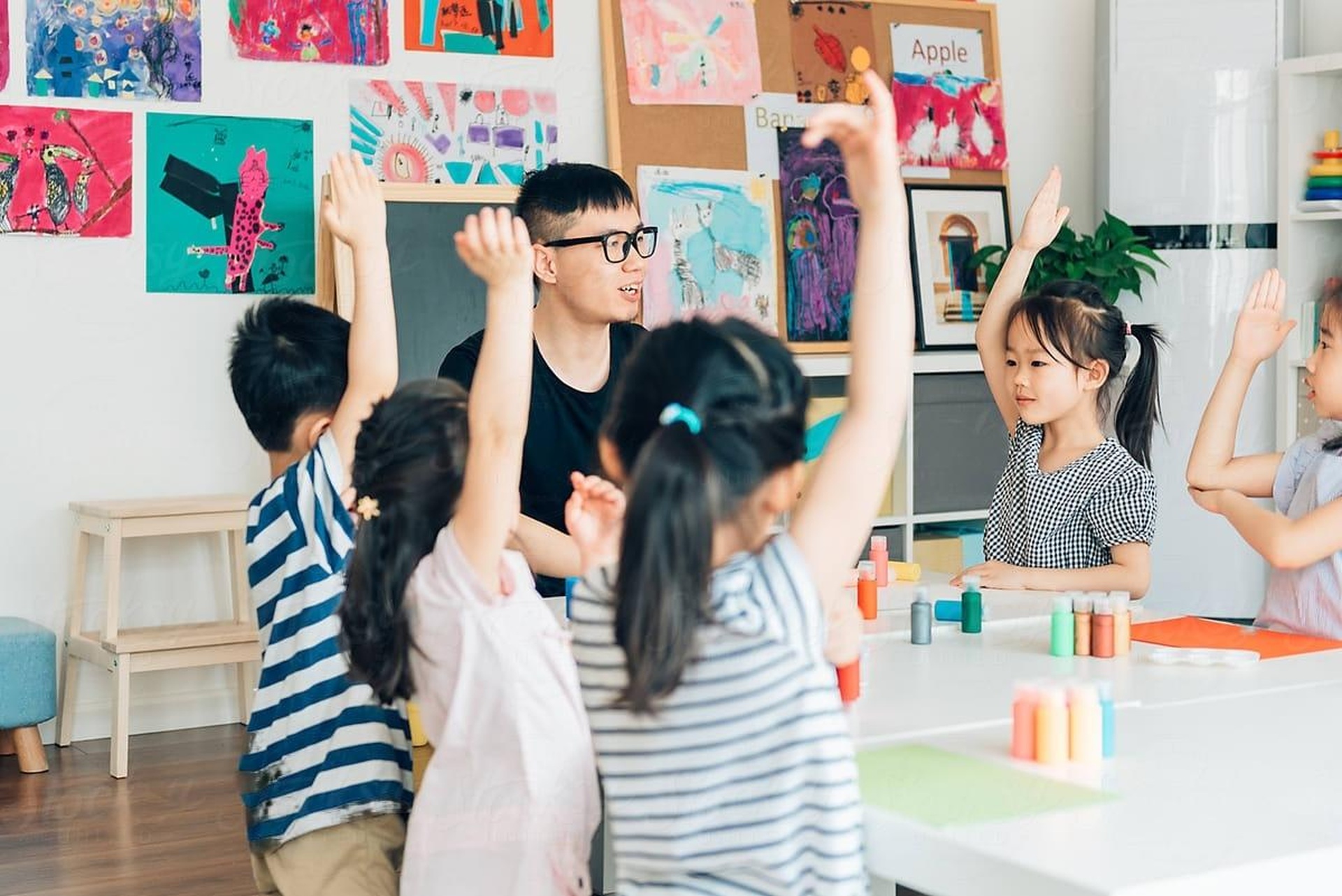Anger from teachers or students can affect the classroom atmosphere. Elementary school teachers need to be prepared to face and handle sudden emotional outbursts from students, because at this age, their ability to control themselves is not yet stable.
In a classroom, each student has a different background. Students with special family circumstances may be going to school with anxiety and worry. Sometimes, negative emotions can cause them to have outbursts of anger, inappropriate attitudes and behaviors towards teachers and classmates.
Anger can manifest in many forms in the classroom. Here are some tips for elementary school teachers to quickly defuse tense situations and maintain a happy, relaxed atmosphere in the classroom.
At the time of anger
Breathing: When a student shows signs of losing control of his or her attitude and behavior, the teacher needs to calm down for a moment and take a few breaths before reacting, to ensure that the teacher's first reaction is done in a calm manner.
Responding to anger with anger only makes the situation worse. To calm down in an unexpected situation, teachers should count to three mentally before moving on to the next step.


In a classroom, each student has a different living background (Illustration: iStock).
Assess the situation: The teacher quickly assesses the situation to see if other students are safe. If there is a danger to other students, the teacher should quickly move them away from the dangerous area.
If the situation becomes chaotic, the teacher can ask some students to invite other teachers to come with them to restore order in the classroom, and to care for and support the other students in the class.
Encourage dialogue: The teacher will then initiate a dialogue with the student who is losing control, asking what the problem is. If the student is willing to talk, encourage the student to explain the problem in detail. This will help the student to release his emotions and reduce anger.
Acknowledge feelings: Don’t tell an angry person that there is nothing to be angry about. When someone is angry, they are no longer able to think rationally and calmly. Teachers do not need to defend an angry student, but showing empathy, understanding, and sharing will help calm the student.
Teachers can say, "I understand that this incident may have caused you to lose your temper." At a time when the student's anger has not really subsided, teachers should not argue right or wrong. Teachers may feel a little angry themselves, but it is necessary for teachers to restrain and control themselves first.


At primary school age, students' self-control is not yet stable (Illustration: iStock).
Ask the student to do something small: Asking an angry student to do something small can be very effective in calming the situation. These tasks should be simple.
For example, if the student is standing, invite him or her to sit down. You might ask the student to get two glasses of water so you can both drink while you talk, or suggest that the student come with you to a more comfortable space to talk for a while.
Teachers and students take deep breaths together: Deep breathing is the simplest and fastest way to calm anger.
Teachers should give gentle, brief instructions, such as: "Focus on your breathing. Count mentally and breathe deeply. Breathe in slowly while counting from 1 to 10, then breathe out slowly, also counting from 1 to 10."
If the student can do one beat as instructed, continue to encourage him to do a few more beats, until you see that he is calmer.
After the anger
These can only be done when the student has truly calmed down.
Expressing concern: Talk to the student again to get more information and see if there is anything wrong with the student. The teacher needs to reassure the student that his/her actions are making the teacher worried. However, the teacher should not scold, but explain gently with logic and a loving, constructive spirit.
If your student has caused any damage during his anger, ask him to take action to fix it. For example, if he said something wrong to someone, ask him to apologize. If he broke something, ask him to fix it.


A sense of security and joy between teachers and students is the most ideal atmosphere in the classroom (Illustration: iStock).
Talking to parents: When talking to the parents of a student who has a temper tantrum, teachers should maintain a positive attitude. This will help the relationship between teachers and parents become better, more cooperative, and more friendly.
A positive attitude also helps make the conversation easier. Tell the parent what happened, then listen to the parent add their own perspective.
Teach students how to control their emotions: Many students often have outbursts of anger because they do not know how to control their emotions.
Teachers can share simple techniques such as deep breathing and visualizing happy images that make them feel excited. Additionally, if possible, students should learn how to remove themselves from a stressful situation and give themselves space and time to calm down.
These simple tips will help students learn how to help themselves. When a student becomes angry, the teacher reminds them to immediately practice the measures that have been shared by the teacher.

Primary school teachers need to be ready to face and handle spontaneous emotional states from students (Illustration: iStock).
Gathering information: If a student is having frequent tantrums, teachers and parents need to gather information about the phenomenon.
Pay attention to the times of day when your child is most likely to become agitated, what things happen that usually trigger his or her anger, who is usually involved in his or her anger, etc. The purpose of collecting information is to identify the factors that easily trigger anger in children.
Plan to cope with triggers: Once you identify triggers, teachers and families can work together to plan ways to help your child overcome triggers and triggers.
For example, if a certain activity often makes it difficult for a student to control himself, talk clearly with him about the time and duration of this activity. Planning together to prepare will help him overcome difficult situations and gradually practice self-control.
According to Teacher Created Materials
Source: https://dantri.com.vn/giao-duc/cach-giup-giao-vien-tieu-hoc-kiem-soat-con-gian-du-xay-ra-trong-lop-20241228115555037.htm



































































































Comment (0)